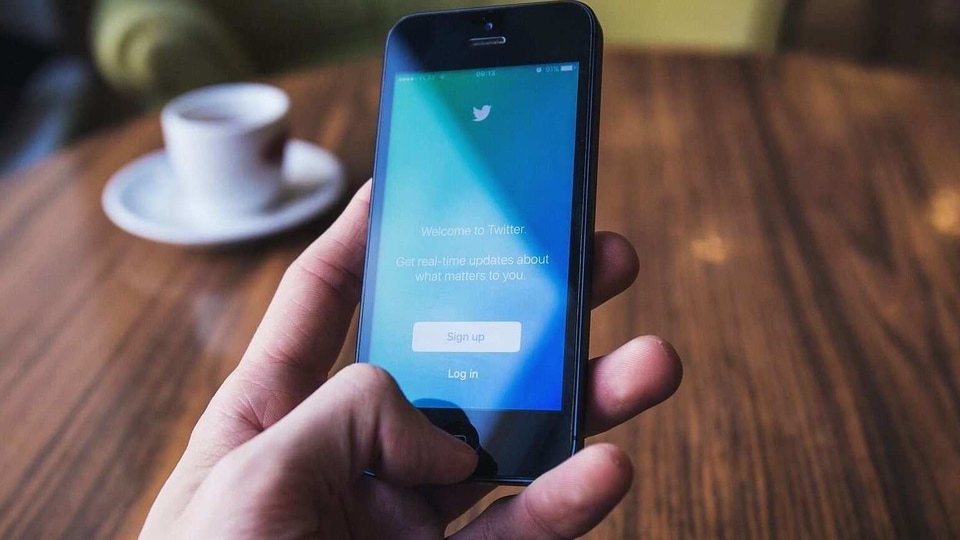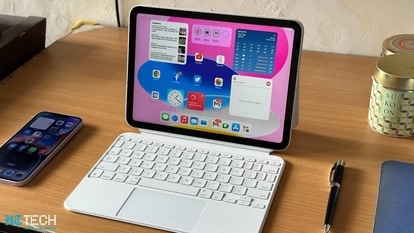The blue tick
Twitter has relaunched the public verification programme with some important changes. The company had shut down the programme after many called it “arbitrary” and “confusing.”

What does a blue tick next to your profile mean? An elementary understanding is that the profile is 'legit' and not an impersonator. While the general purpose may have remained to help make this distinction, but it has been largely misused to foster some superior species on social media. Verified handles enjoy a larger following and more traction, regardless of the nature of the content they post. Naturally, many smell a bias and opacity in the process – a critique Twitter has faced for some time.
Back in 2017, Twitter had to pause public verification programme after many deemed it as “arbitrary” and “confusing”. Twitter CEO Jack Dorsey, in a rare admission, said the process was “broken”. Twitter acknowledged that verification was meant to authenticate identity and voice, but it was interpreted as an endorsement or indicator of importance.
Almost four years later, Twitter has returned with the verification programme. This time around, the social networking platform has made some key changes to the programme – who can apply, who may lose their blue badge, and more. Note that the company has begun enforcing the policy starting today. It will soon make the application form link available to the public.
5 / We are conducting an initial review of verified accounts and will remove verification from accounts whose behavior does not fall within these new guidelines. We will continue to review and take action as we work towards a new program we are proud of.
— Twitter Support (@TwitterSupport) November 15, 2017
“This is the first time Twitter is formalizing a public policy for verification. In order to create this policy, Twitter sought public feedback to make this more representative of the needs of the people who use Twitter, and incorporated some of the feedback we received into our final policy. Some of the key callouts in our new draft policy include:
- clearer definitions for what the blue verified badge means and how one can receive it
- criteria to automatically debadge an account if it's inactive or if the profile is incomplete
- grounds to deny verification to ineligible accounts, such as parody and fan accounts or those who have been involved in or are associated with violence or abusive content,” a Twitter spokesperson told HT Tech.
Last call! As part of our new verification policy, we'll remove verification badges from inactive and incomplete accounts starting tomorrow, January 22.
— Twitter Support (@TwitterSupport) January 21, 2021
We've reached out directly to those who need to take action to stay verified. For more info: https://t.co/pDI1YmZOM7 pic.twitter.com/J3Aj9H3X7x
Twitter says that to be verified an account must be notable and active. To begin with, Twitter is going to verify the following:
1) Government
2) Companies, brands and non-profit organizations
3) News organizations and journalists
4) Entertainment
5) Sports and esports
6) Activists, organizers, and other influential individuals
“This new policy is the start of our work to make verification clearer and more equitable. Fixing existing asymmetries is a priority for us, and seeking public comment prior to launching this policy was the first step in developing a more equitable approach to verification, especially when it comes to historically marginalised groups on Twitter,” the spokesperson added.
As said earlier, there are possibilities of some accounts losing their blue badges.
“One may lose their badge if they change their account name (@handle), if their account becomes inactive or incomplete, or if they are no longer in the position they initially were verified for – such as an elected government official who leaves office – and they do not otherwise meet Twitter's criteria for verification. The service may also remove the blue badge from accounts that are found to be in severe or repeated violation of the Twitter Rules,” the spokesperson explained.
It is an easy guess that Twitter will be soon swamped with verification requests. The company has set up a global support team that will be responsible for enforcing this new policy and badging individuals that are eligible for the verification. It will use both automated and human review processes to complete the process.
“Twitter plans to use both automated and human review processes to ensure that the service is reviewing applications thoughtfully and in a timely manner,” the spokesperson said. It also plans to give users an option to share demographic information after completing the new verification application so that it can better measure and improve the equity of the verification process.
When asked whether Twitter will consider a user's nature of posts before verifying them, the spokesperson explained: “Twitter uses a mix of internal signals to evaluate the authenticity of a given account's followers and engagement count. The service also assesses a range of signals associated with third-party public resources submitted in support of applications for verification (such as how recently they were updated) to detect fraudulent submissions.”
A utopian world of legitimate users
Social networking platforms have long grappled with the problem of fake accounts, impersonators, and bots. Time and again, they have weeded out millions of such accounts, but only to see them multiply in the future. It's a menace and social networking platforms are well aware of it.
In India, we have a system called KYC (Know Your Customer). The digital version of KYC (also popularly known as eKYC) allows users to verify themselves through government-validated documents such as Aadhar or PAN Card. It is quite a successful model in digital banking and telecom spaces. Can the same be replicated for social networking platforms? Or will it just open another pandora's box, considering the poor record of social media company's management of users' data?
Twitter says it has no such plans to use govt documents for verification.
Interestingly, there have been discussions to link social networking accounts with Aadhaar. Some believe it would help curb online fraud, rumour mongering, and hate speech. But it can be intrusive, and many may not feel comfortable handing over such data to these platforms.
READ: SC declines to entertain plea to link Aadhaar, social media accounts and ‘No plan to link Aadhaar with social media accounts': Government
A Noida-based startup HelloVerify, which offers background check solutions, is building a new platform where people can interact socially and transact with verified profiles.
“The platform will be India's first digital trust system which caters to all the background check needs, provides a safe digital repository for an individual's documents and certificates and allows for interaction with other verified individuals,” Varun Mirchandani, Co-Founder, Helloverify, told HT Tech.
“Social network is available to all individuals and people are free to share what they want. There is very little control on whether the information people share about themselves is true or not. In certain situations, however, there is a need for assurance of credibility of the person whether its online buying and selling of goods (especially in the used goods space), accepting job offers online or even finding prospective partners on online matrimony websites. In such cases, verifying people becomes key to protect oneself from online frauds which are highly prevalent in the current day and age,” he added.
According to Mirchandani, the new platform will have each individual joining the community verified by way of a selfie, a 3D scan, and an identity check. He further explained that the platform will create a secure ecosystem of verified profiles in which individuals can interact with each other with an assurance the other person is genuine and verified. Users can also run additional background checks to know more about the contact in case of any financial transaction.
Stopping the hate content
The revamped verification programme with better transparency will certainly bring more trust to the social networking platforms. The problem, however, is that blue badges may not necessarily stop the spread of misinformation and fake news.
Take the example of former US President Donald Trump who was banned from posting content on different social networking platforms including Twitter. During the US Presidential elections, many of his tweets were labelled for misleading content. While Trump faced punitive actions, many verified handles have largely gone unchecked for similar posts in nature.
ALSO READ: Facebook refers Trump ban to Oversight Board
Mishi Choudhary, a technology lawyer and online civil activist, stressed the need for more transparency in the process of verification.
“We will need a lot more to address the issues of hate speech and uniform enforcement of content moderation policies than just self-verification but labelling bots will really give people a pause before blindly engaging with any content,” Choudhary said.
Apar Gupta, executive director of Internet Freedom Foundation, said that the programme could help mitigate the sources of fake news to a certain extent. “However, the larger ecosystem of disinformation does not even require an existing sole verified account to say what people say… quite often screenshots etc are used. There are other ways people circumvent the norms and even purposely to create disinformation,” he added.
Gupta pointed out that Twitter has given greater control to users over the period such as the option to switch off replies, locking their accounts, but things such as hashtags are quite often used to spread disinformation or build conversations in certain geographies on political issues rather than cultural or sporting interests.
“It's just a very sad reminder of how there is a considerable lack of under-investment and value creation for conversations which are socially and individually beneficial for people,” he added.
Catch all the Latest Tech News, Mobile News, Laptop News, Gaming news, Wearables News , How To News, also keep up with us on Whatsapp channel,Twitter, Facebook, Google News, and Instagram. For our latest videos, subscribe to our YouTube channel.


























